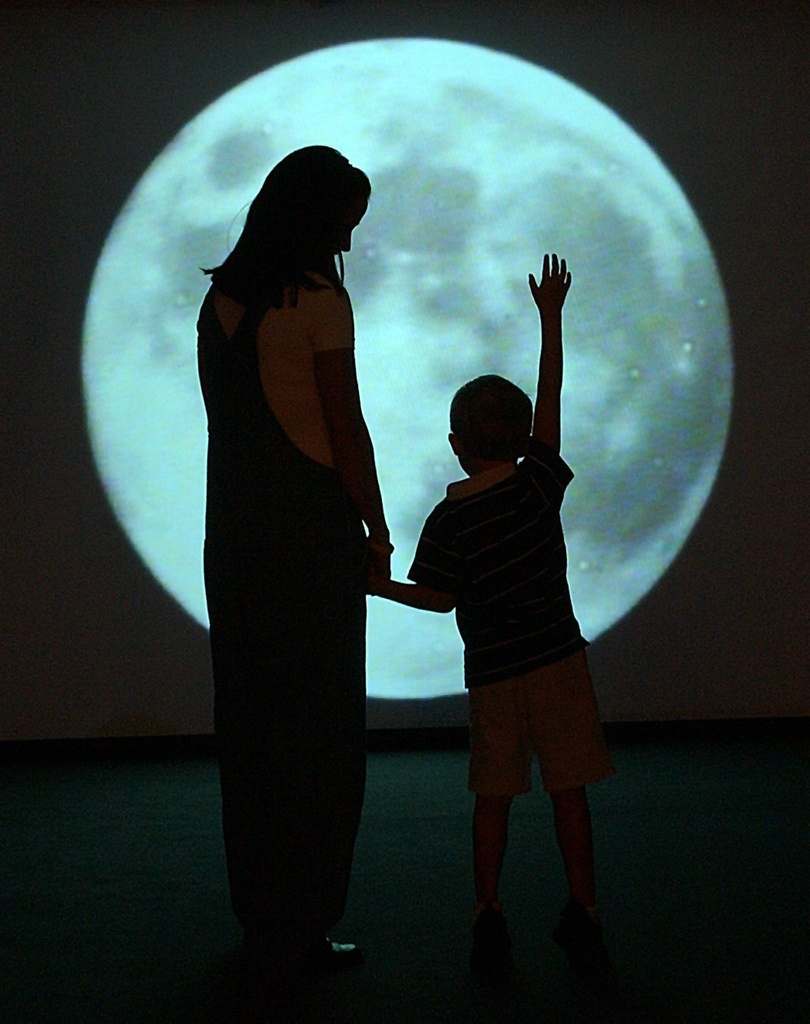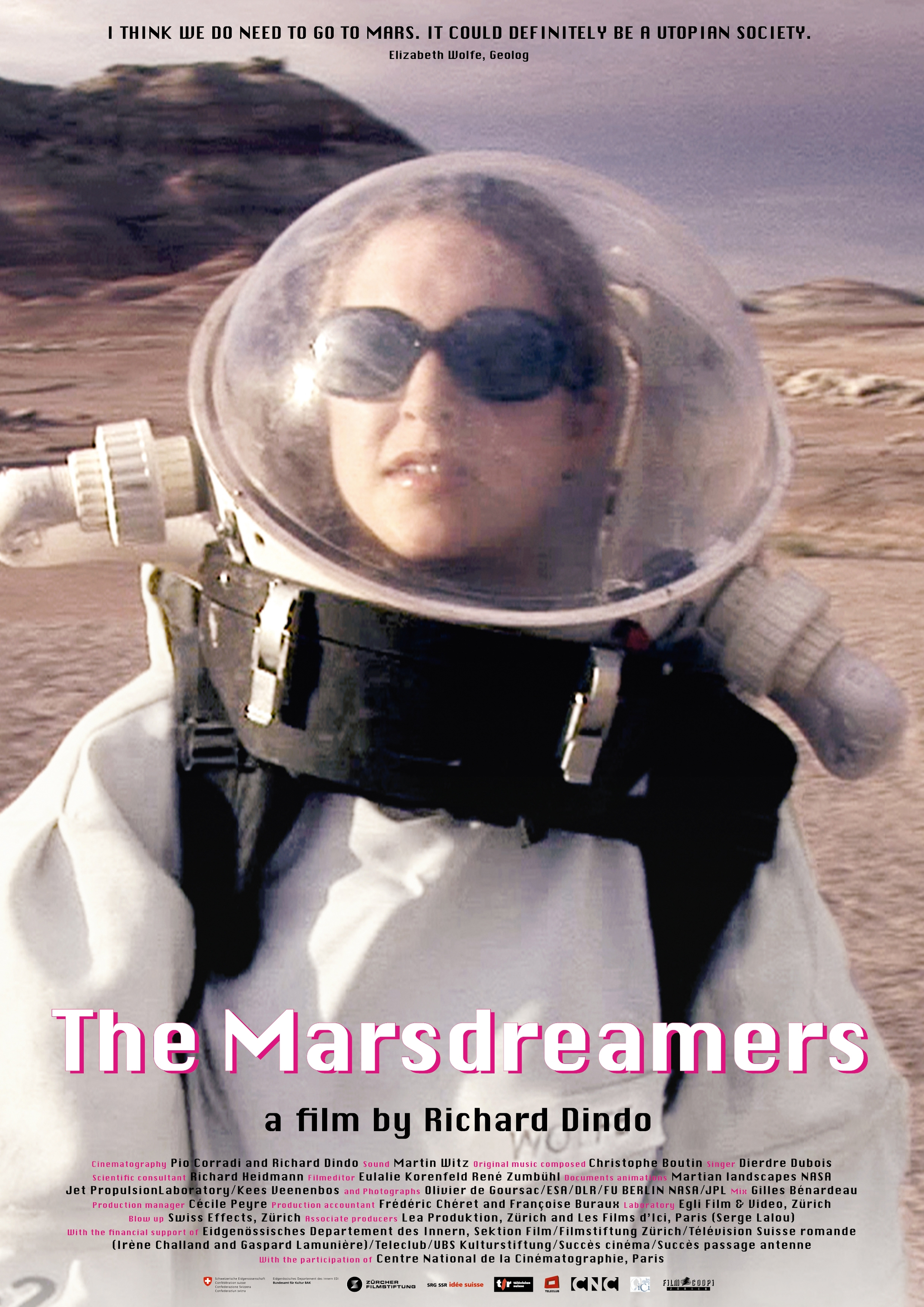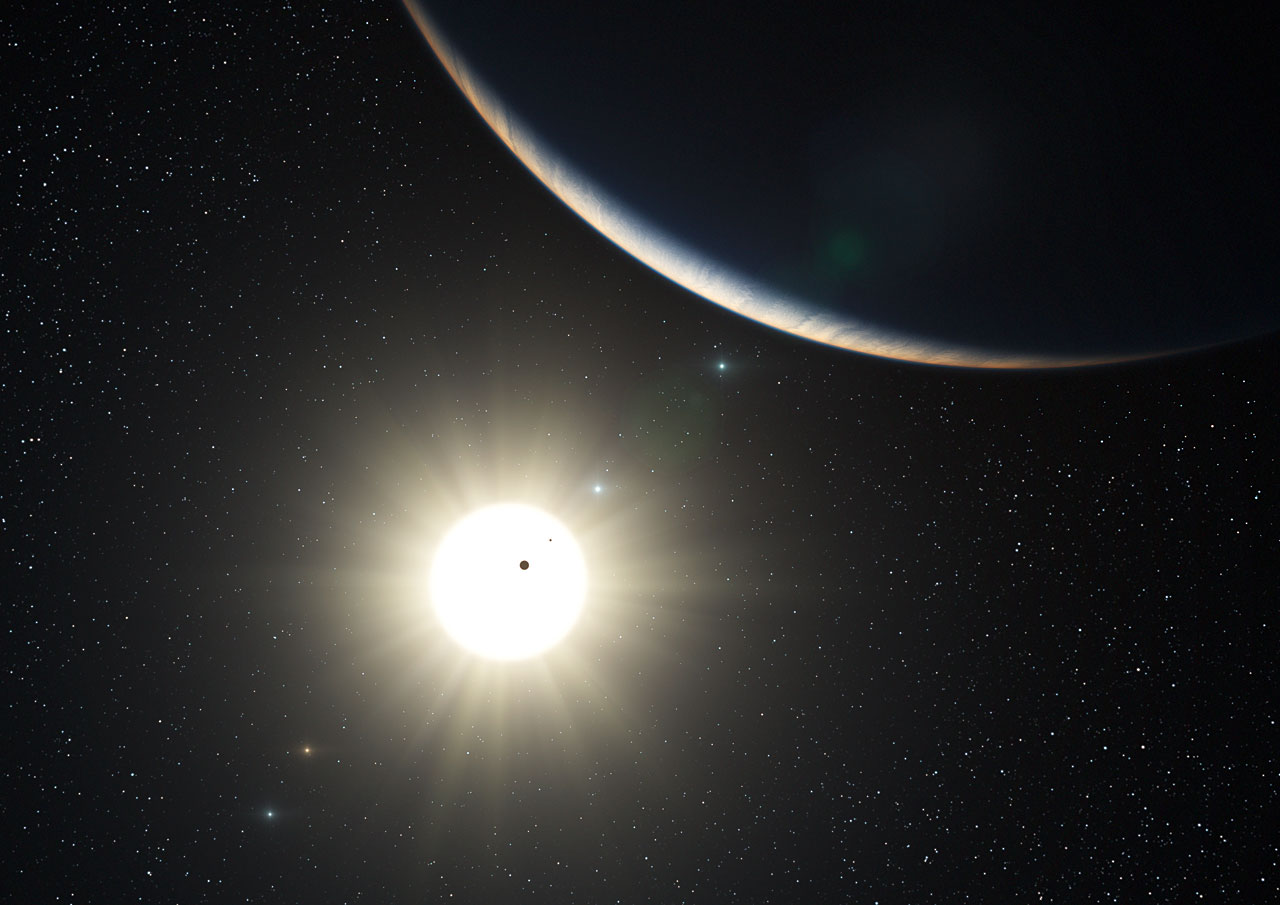Close encounters of the Swiss kind

What might alien life forms look like and how might we find them? An exhibition at the Zoological Museum of Zurich University sheds light years on the issue.
“Beyond Bug-Eyed Monsters” showcases scientists’ efforts to track down intelligent – and not-so-intelligent – life elsewhere in the universe.
“I think we’re all really interested in whether we’re alone and whether we’re unique. I think it’s just human curiosity to ask those kinds of questions and to want to find answers,” Dr Jonathan Coles, from the Institute for Theoretical Physics at Zurich University and one of the exhibition’s organisers, told swissinfo.ch (listen to audio for extended interview).
The hunt begins closer to home, with images of so-called extremophiles – creatures that thrive in extreme conditions here on Earth, such as ocean-floor hydrothermal vents, desert rocks or London suburbs.
The Leukerbad springs in canton Valais, for example, are the hottest springs in Switzerland – the water is 48 degrees Celsius – and host 25 species of cyanobacteria.
Another poster shows some Alpine endoliths, rock-dwelling communities of bacteria, fungi and multi-cellular organisms, which in Switzerland are very rare. These are of particular interest to astrobiologists, who believe endolithic environments on Mars and other planets could be microbe hotbeds.
“Life tends to find a way of living in these extreme environments,” Coles said. “What we would consider extreme, anyway. From their perspective we live in an extreme environment – oxygen is deadly to most of these organisms!”
Interactive
The spiral-shaped exhibition leads visitors through the universe and to planets which could be home to life.
The trick is to look in “habitable zones”, regions which are neither too near stars (and therefore too hot) nor too far (and too cold), but “just right”, which is why they are also known as “Goldilocks zones”.
One of the many interactive exhibits is the “planet factory”, where visitors can create their own solar system using astrophysical data stored on Zurich University’s supercomputer and then see how many of the resulting planets turn out to be potentially habitable.
Coles says the hardest thing in putting together the exhibition (see box) was distilling all the information in a way that wasn’t too exhausting.
“We wanted to get the important points across in a way that doesn’t require huge amounts of background knowledge. We don’t want to dumb it down, just make it clear,” he said.
“Also, we didn’t want to focus on intelligent life – ET and aliens – which is what most people think of when they think of extraterrestrial life. We really wanted to focus on the research: what are scientists doing? How do we find planets?”
Martian meteorite
The target audience is “someone who reads newspapers”, but they also put on specific tours for children aged from around eight to 12 or so.
“When kids come here they love it. They love learning about stars and space and things. Basically [the exhibition] is for anyone who’s curious.”
However, many people’s knowledge of the universe doesn’t extend much beyond “My very excellent mother just served us nine pizzas” (a mnemonic for the planets, amended in 2006 to “nachos” after the downsizing of Pluto). Does Coles think the curriculum could do a better job of instilling basic cosmology?
“I’m sometimes a bit disappointed,” he admitted. “For example some people don’t realise the sun is a star.”
He then points to the only extraterrestrial object in the exhibition, a slightly underwhelming rock that turns out to be a slice of the Zagami Meteorite, an 18kg boulder from Mars which landed in a Nigerian field in 1962, three metres from a surprised farmer who was knocked off his feet.
That said, this stone wouldn’t look out of place in anyone’s garden – how does Coles know he’s not dealing with a Piltdown-type hoax?
“Inside are glass crystals which have trapped gas molecules. If we look at the composition of those gas molecules, it’s the same as in the Martian atmosphere as measured by Mars landers,” he explained.
Existential crisis
Although no samples of extraterrestrial life have ever been found, the recent Swiss-aided discovery of briny water on Mars (see related article) has raised hopes.
Coles goes along with the scientific consensus that, given the mind-boggling size of the universe (see link), the chances are that we’re not alone.
“[Scientists] tend to work in probability and it would be unlikely that there isn’t something – not necessarily intelligent, as that requires a whole series of events to occur – but perhaps simple life, bacterial forms, things like that,” he said.
“Even the rarest events in the universe become commonplace when you consider the enormity of the universe. When you try to put it in perspective, you realise just how insignificant we are on Earth.”
Doesn’t he lie in bed having existential crises? British cosmologist Stephen Hawking has said the human race is “just a chemical scum floating on a medium-sized planet, orbiting around a very average star in the outer suburb of one among a hundred billion galaxies”…
“That’s a very pessimistic view of it, but in some sense that’s true! Somehow it helps me – even my biggest problems really aren’t that important compared with the universe.”
Abominable SETI?
But in addition to the technical challenges facing the search for extraterrestrial intelligence (SETI), there’s also an ethical debate: should we in fact be trying to attract the attention of aliens who might not all be as benign as ET?
Hawking, who says it is likely that alien life exists, reckons we should “lay low”, drawing parallels with Columbus’s arrival in the Americas, “which didn’t turn out well for the Native Americans”.
Other scientists have also raised concerns about firing off signals into space, which they say could be seen as an intergalactic dinner gong.
“It is a risk, I suppose,” Coles admitted. “But I think I’m willing to take it!”
Beyond Bug-Eyed Monsters, which runs until March 11, 2012, includes the following sections:
– What is life?
– Is there life on Mars?
– Galaxy/star/planet formation
– Searching for planets
– Search for extraterrestrial intelligence (SETI)
– Film on human concept of aliens throughout history
In 1950, Italian physicist Enrico Fermi wondered why, if the Milky Way was teeming with technologically advanced civilisations – as its size and age suggests – was there no evidence, such as spacecraft or probes. “Where is everyone?” he is said to have asked.
This became known as the Fermi Paradox.
“I think it partly comes down to the distances,” Dr Jonathan Coles, from the Institute for Theoretical Physics at Zurich University, told swissinfo.ch.
“Even our signals that we’ve been emitting for the past 40 years haven’t really gone that far in terms of distances across the galaxy. If another race exists on the other side of the galaxy, they wouldn’t have heard of us yet – and they won’t hear from us for thousands of years to come.”

In compliance with the JTI standards
More: SWI swissinfo.ch certified by the Journalism Trust Initiative















You can find an overview of ongoing debates with our journalists here . Please join us!
If you want to start a conversation about a topic raised in this article or want to report factual errors, email us at english@swissinfo.ch.